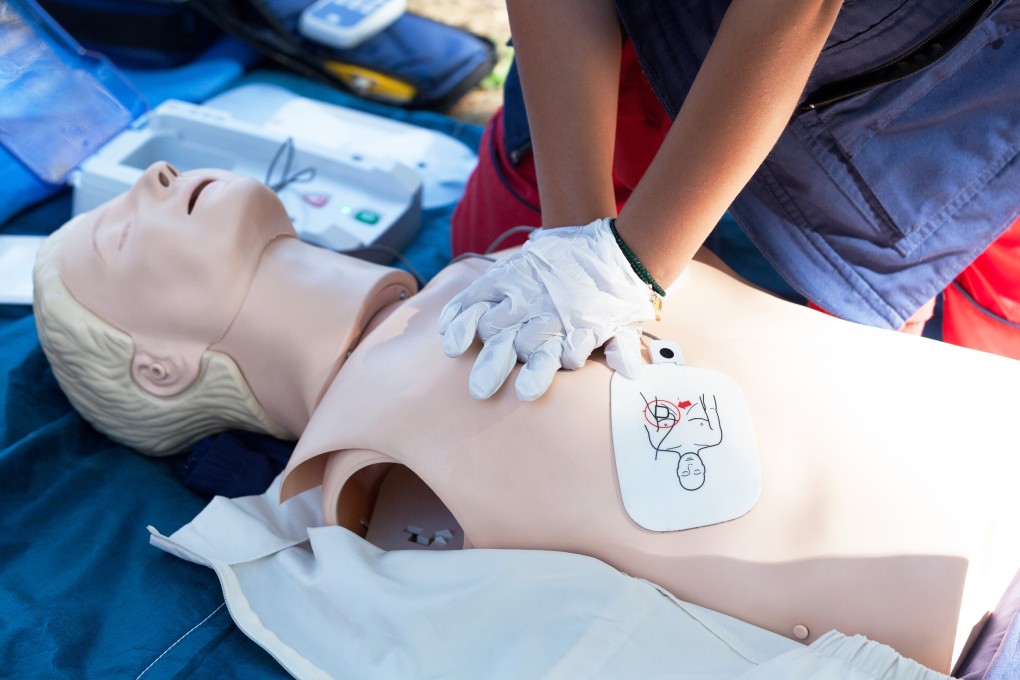Patients almost 10 times more likely to survive cardiac arrests with CPR or AED applied, but few in Hong Kong receive such aid, research finds
- Of the 829 young patients studied, only 34 per cent received CPR while less than 7 per cent had help with AED; only 4 per cent survived
- Survival rate in Hong Kong ‘extremely low’ when compared with other Asian countries

Patients aged 40 and under in Hong Kong who suffer cardiac arrests outside hospitals are almost 10 times more likely to survive if emergency first aid procedures are applied promptly, researchers have found, but very few receive such help.
Among 829 cases involving young patients, only 34 per cent received cardiopulmonary resuscitation (CPR), while just 6.8 per cent were assisted with an automated external defibrillator (AED). Only 4 per cent lived.
The findings, revealed on Wednesday, are part of the city’s first large-scale analysis of patients who suffered cardiac arrests outside hospitals. Polytechnic University researchers studied a total of 22,014 such cases gathered between December 2017 and December 2020.
The research, commissioned by the SADS HK Foundation, which supports patients with sudden arrhythmia death syndrome, also found that just 1.8 per cent of all cases survived and were discharged from hospital.
This survival rate was “extremely low” when compared with Asian countries such as Japan and South Korea, said Dr Axel Siu Yuet-chung, a specialist in emergency medicine, adding that the low application rate of CPR and AED was the main reason.